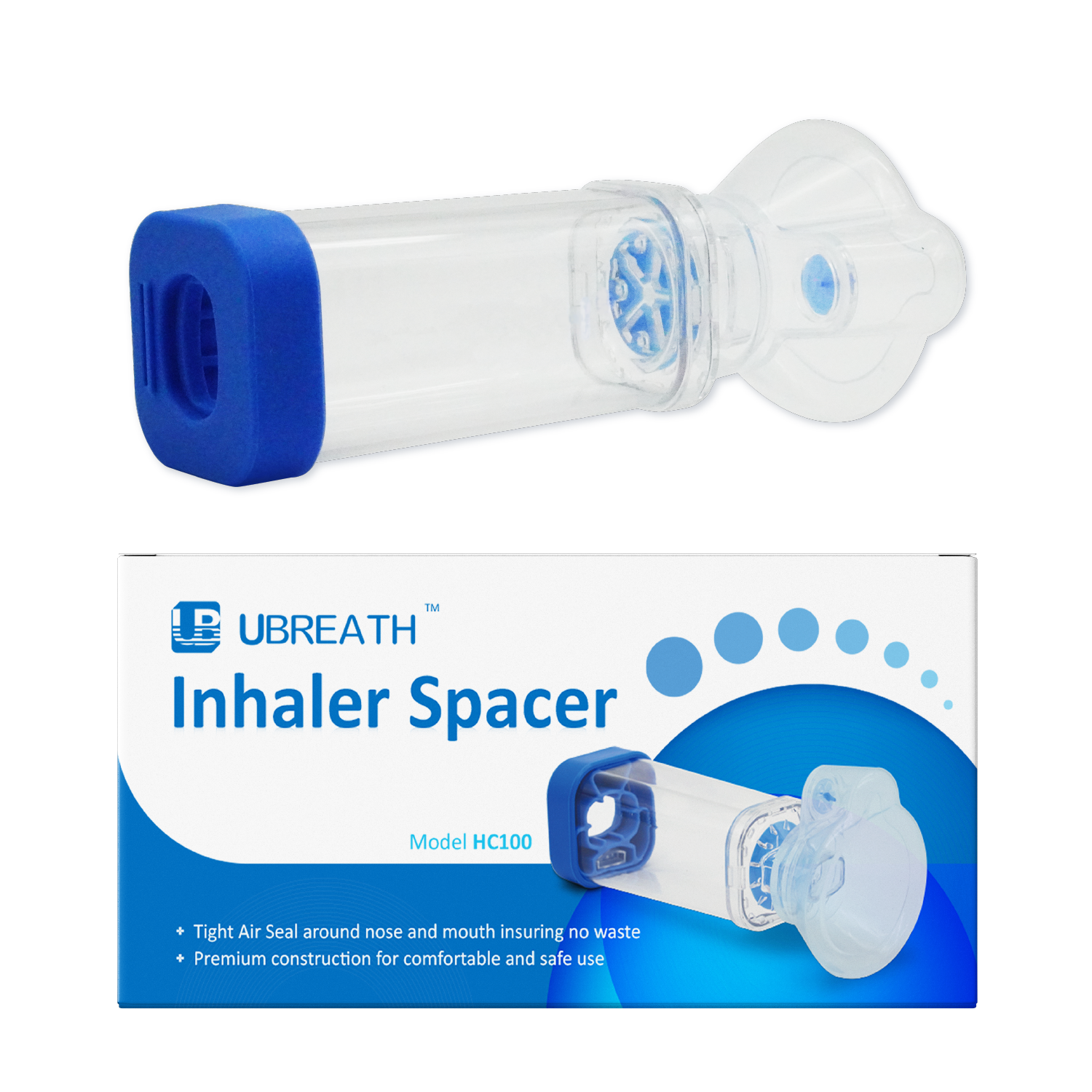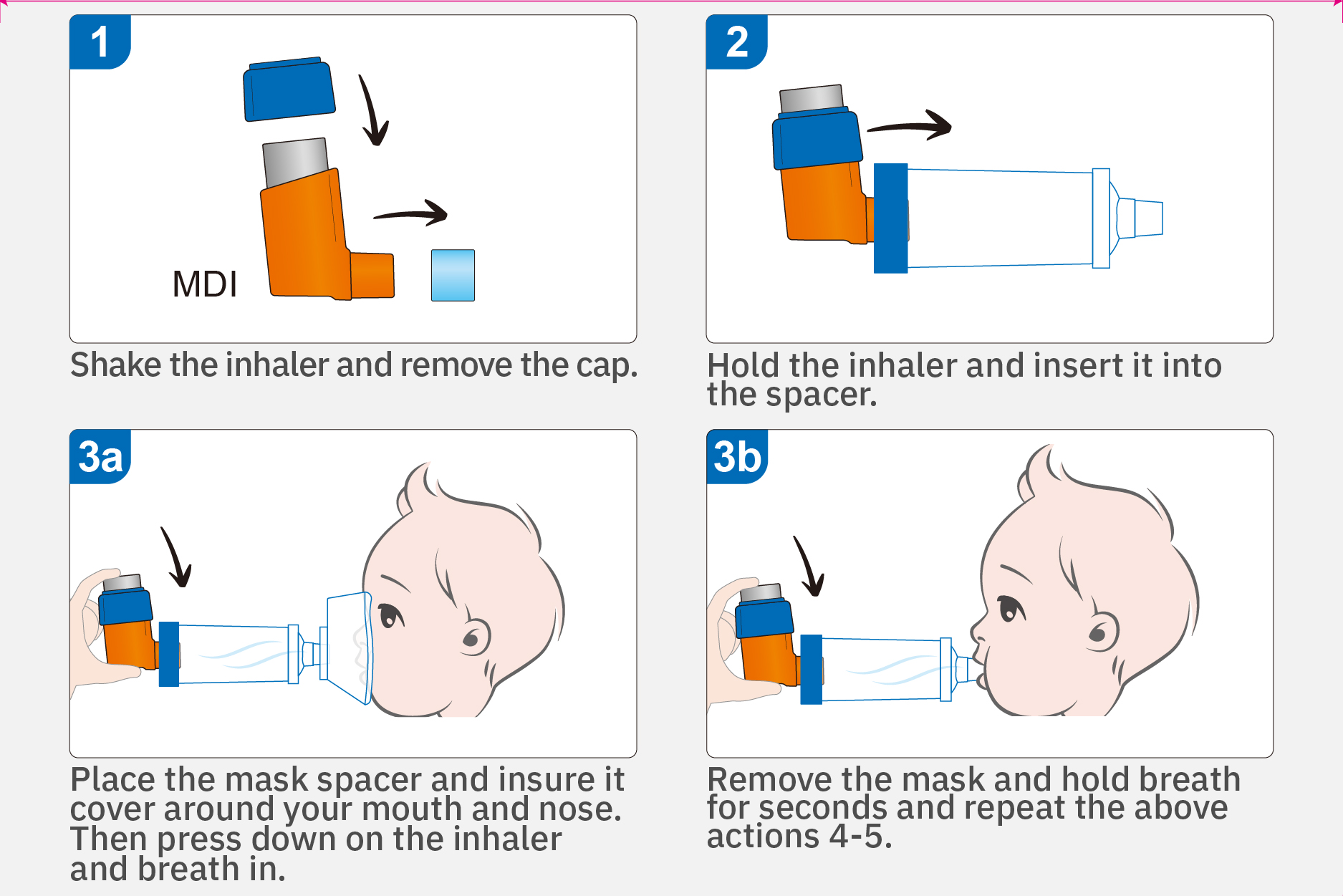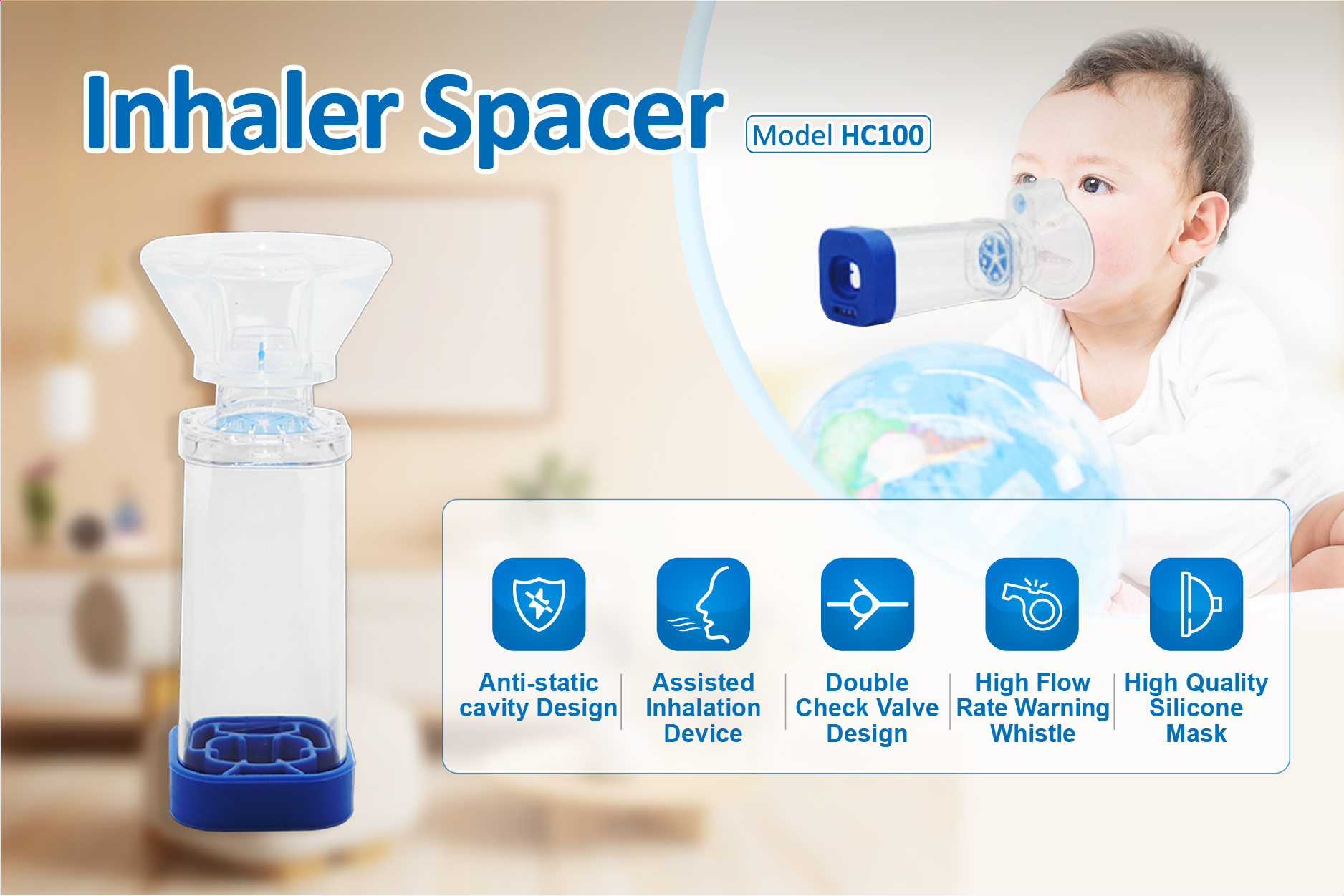Using your Inhaler with a Spacer
What is a spacer?
A spacer is a clear plastic cylinder, designed to make a metered dose inhaler (MDI) easier to use. MDIs contain medications that are inhaled. Instead of inhaling directly from the inhaler, a dose from the inhaler is puffed into the spacer and then inhaled from the mouthpiece of the spacer, or with a mask attached if it is a child under the age of four years. The spacer helps deliver the medicine directly into the lungs, instead of the mouth and throat, and therefore increases the effectiveness of the medication by up to 70 percent. As many adults and most children find it difficult to coordinate the inhaler with their breathing, using a spacer is recommended for everyone who is using a metered dose inhaler, especially preventer medications.
Why should I use a spacer?
It is far easier to use an inhaler with a spacer than an inhaler alone, as you do not need to coordinate your hand and breathing.
You can breathe in and out several times with a spacer, so if your lungs aren’t working very well you don’t have to get all the medicine into your lungs on one breath only.
The spacer reduces the amount of medicine from the inhaler hitting the back of your mouth and throat, rather than going into your lungs. This reduces the local side effects from preventer medication in your mouth and throat – sore throat, hoarse voice and oral thrush. It also means that less medicine is swallowed and then absorbed from the intestine into the rest of the body. (You should still always rinse your mouth out after using your preventer medication).
A spacer ensures you get more of the medicine you inhale into the lungs where it does the most good. This means that you may also be able to reduce the amount of medicine you need to take. If you use an inhaler without a spacer, very little medication may actually get into the lungs.
A spacer is as effective as a nebuliser for getting the medicine into your lungs in an acute asthma attack, but it is faster to use than a nebuliser and less expensive.
How do I use a Spacer
- Shake the inhaler.
- Fit the inhaler into spacer opening (opposite the mouthpiece) and put the spacer into your mouth ensuring that there are no gaps around the mouthpiece OR place the mask on your child’s face, covering the mouth and nose ensuring there are no gaps. Most children should be able to use the spacer without a mask by the age of four years.
- Press the inhaler once only — one puff at a time into the spacer.
- Breathe in slowly and deeply through the spacer mouthpiece and hold your breath for 5-10 seconds OR take 2-6 normal breaths, keeping the spacer in your mouth all of the time.You can breathe in and out with the spacer still in your mouth as most spacers have small vents to allow your breath to escape rather than going into the spacer.
- If you need more than one dose of medication, wait one minute and then repeat these steps for further doses, making sure that you shake your inhaler between doses.
- If using a mask with preventer medication, wash the child’s face after use.
- Wash your spacer once a week and before using it for the first time with warm water and dishwashing liquid. Don’t rinse. Drip dry. This reduces the electrostatic charge so that the medicine does not stick to the sides of the spacer.
- Check for any cracks. If used regularly your spacer may need to replaced every 12-24 months.
Cleaning the inhaler and spacer
The spacer device should be cleaned once a month by washing in mild detergent and then allowed to dry in air without rinsing. The mouthpiece should be wiped clean of detergent before use. Store the spacer so that it will not become scratched or damaged. Spacer devices should be replaced every 12 months or sooner if it appears worn or damaged.
Aerosol inhalers (such as salbutamol) should be cleaned every week. Replacement spacers and further inhalers can be obtained from your GP if needed.
Post time: Mar-17-2023




